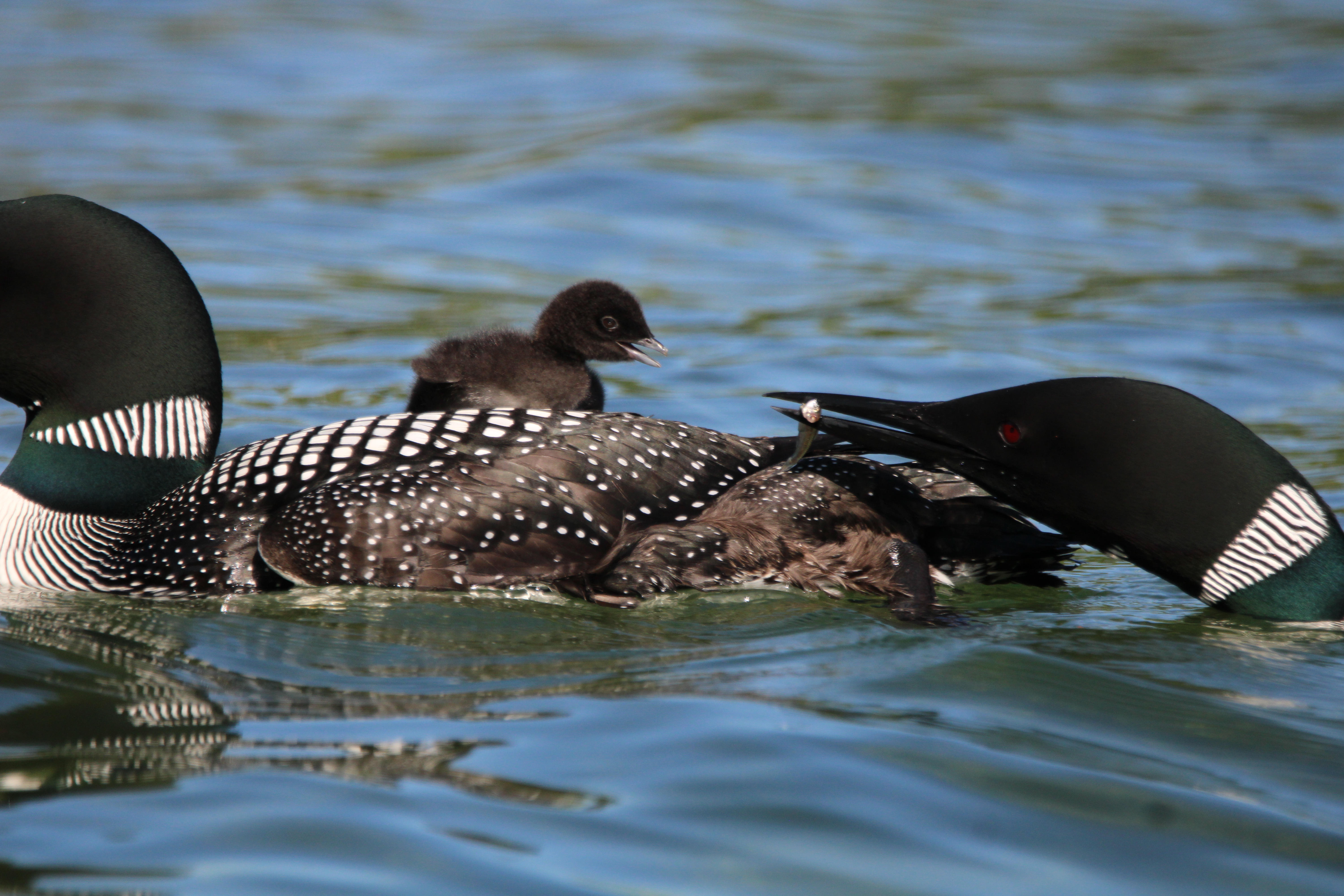June 14, 2024 at 3:23 p.m.
By Jenny Wuebker Chapman, Aquatic Wildlife Advocacy and Loon Liasion CGWLAA | Comments: 0 | Leave a comment
On the Woman Lake Chain, we have verified seventeen nesting loon pairs, with the first six chicks from four loon pairs hatching over June 1st weekend. Since then, two other loon chicks have hatched. The remaining loon eggs, if viable and kept safe and warm, will hatch within the next two weeks. So, we could have twenty little loon chicks swimming around our lakes during the July 4th holiday week.
Loons are very fascinating birds, and I continue to learn new things about our Minnesota state bird every day. The more you learn about the behaviors of the loons and the development of the chicks, the more you will understand how to help protect the whole family.
Here is a brief description of the first four weeks of Loon Chick Development from the Loon Preservation Committee. To learn more, please visit their website:
https://loon.org/about-the-common-loon
• 1-2 days: Newly hatched chicks are covered in dark downy feathers with white bellies. Unlike their parents, the young loon chick can walk upright on land. Although they can swim immediately after hatching, chicks spend a lot of time riding on their parents backs during the first several days of their lives. This helps to regulate their body temperature and protects them from underwater predators. Chicks are entirely dependent on their parents for food and one adult remains on the water surface with the chick, while the other catches fish and feeds them.
Fun Fact: Why do Loons have a white belly? It’s an adaptation to increase the chance of survival from the threat of large predators under the water. With a white belly, Loons are better camouflaged against the light-colored sky.
1st week: The chick’s legs, feet and head, which are needed for swimming and food capture, begin to grow. Chicks are better able to regulate their own body temperatures and may spend more time in the water on their own. They can swim to the bottom of shallow areas, probe and search around for objects, and chase fish.
• 2nd week: Loon chicks molt into a second downy plumage that is light brown color. They can swim underwater. Parents may begin leaving chicks alone on the water’s surface while both dive for food to feed them.
• 3rd week: Loon chick bodies begin to elongate. Their bills also begin to lengthen. Juvenile feathers begin to develop. As their bodies grow and begin to take on the characteristic shape of loons, they lose the ability to walk upright on land.
• 4th week: The growth of the juvenile primary feathers begins. At this age, chicks have become too large to ride on their parent back but may still try.
If you see an adult loon from mid-June to September, it is likely that one or two chicks are nearby. When the chick hatches, they grow quickly, but even so, they are extremely vulnerable until they are strong enough to fledge and fly south (late October through November)
Loon parents frequently move their chicks away from the nesting environment and out into deeper water. Young chicks cannot dive, making them vulnerable to being injured or killed by watercraft. Boats and jet ski strikes are the leading cause of loon deaths.
Everyone loves to hear the Loon calls. It’s one of the sounds we look forward to when the loons migrate north in Spring. Adult Loons are very protective of their young chicks. When threatened, you may hear the tremolo call, their danger warning or the yodel, the territorial call. To familiarize yourself to these calls, visit nationallooncenter.org/about-loons.
Fun Fact: Only the male loon yodels.
Chicks will tire easily! In the presence of watercraft, kayaks and other paddle sports, loons can be spooked, causing chicks to keep swimming instead of feeding and resting. This can weaken them, affecting their ability to survive.
Fun Fact: Chicks are fed by their parents on an average of 73 times a day, and the adult loon eats around 2 lbs. of fish per day.
Please LOON AWARE! Do not approach the loons and give loons plenty of space. Please stay at least 200 feet away.
We have already stopped a few boats and paddlers who were harassing the adult loons and their chicks. So, please educate yourself, your family and friends on how to protect and help the loons succeed in raising their young. If a member of the Loon Watchers or CGWLAA Boat Patrol sees you getting too close to a loon family, or the loon family shows signs of being threatened, they will politely remind you to back away.
Please contact me at [email protected] if you have any questions or see anything that would be of interest regarding our wonderful loons.
Thank you very much for your support and cooperation!
Reference: BE LOON AWARE! From the MN Department of Natural Resources.
Loon Preservation Committee - https://loon.org
National Loon Center - https://Nationallooncenter.org
WEATHER SPONSORED BY
Latest News
Events
November
To Submit an Event Sign in first
Today's Events
No calendar events have been scheduled for today.




Comments:
You must login to comment.